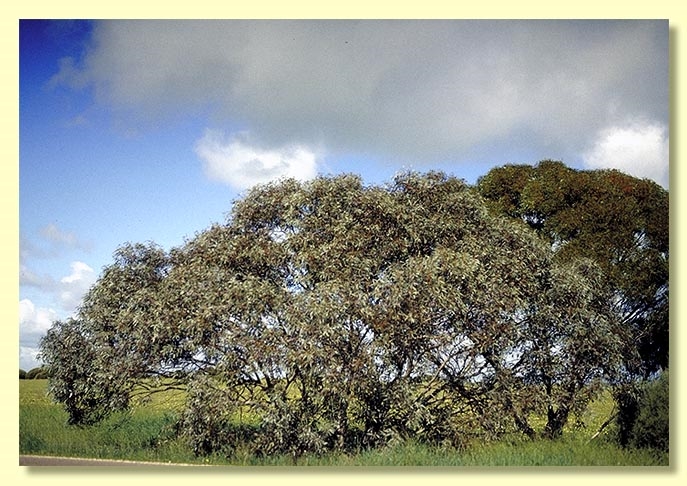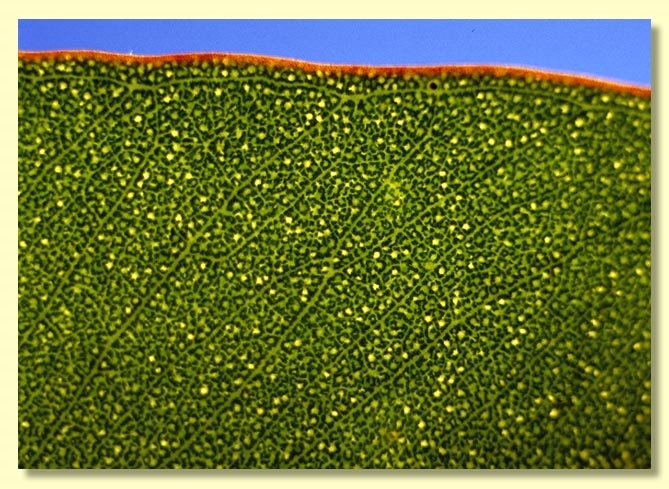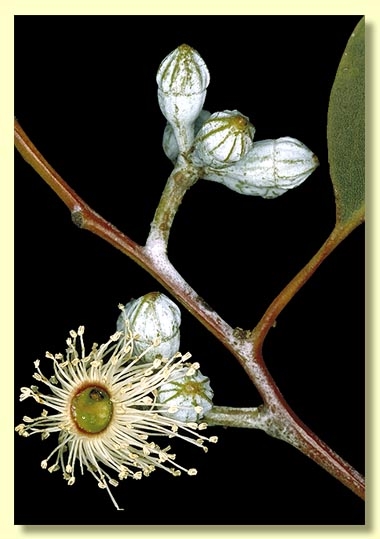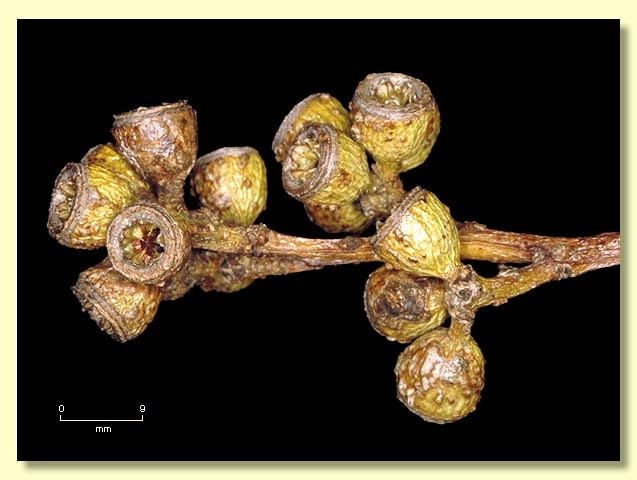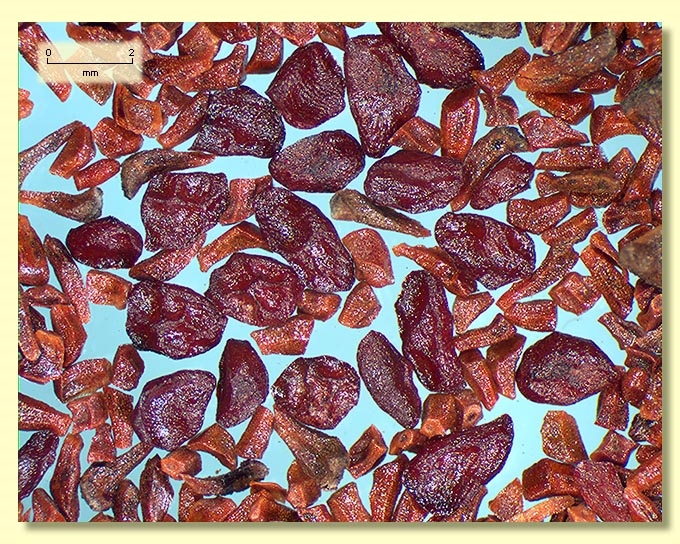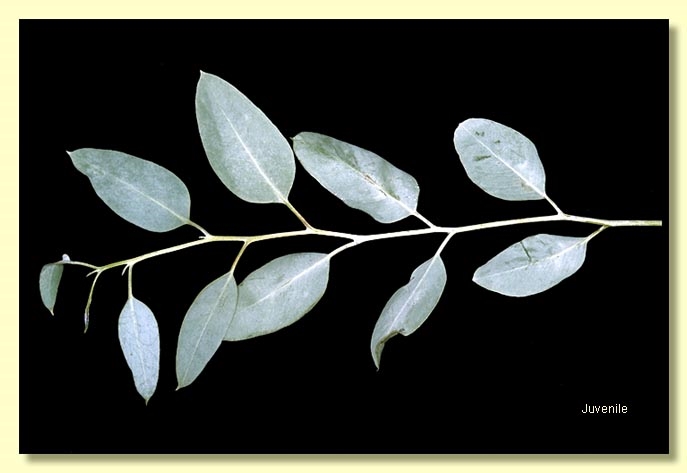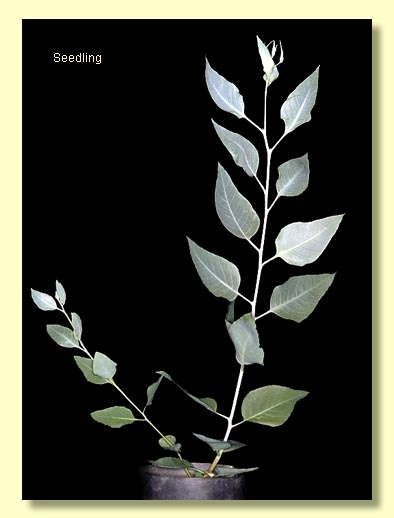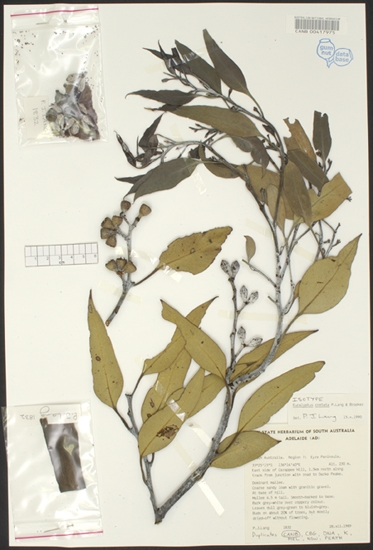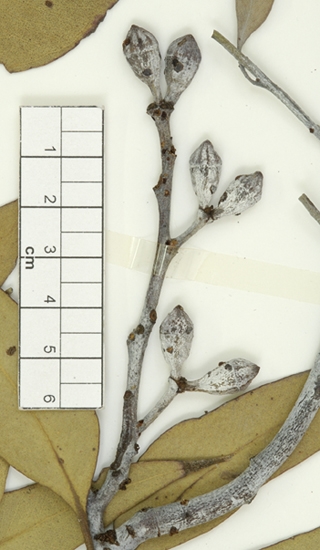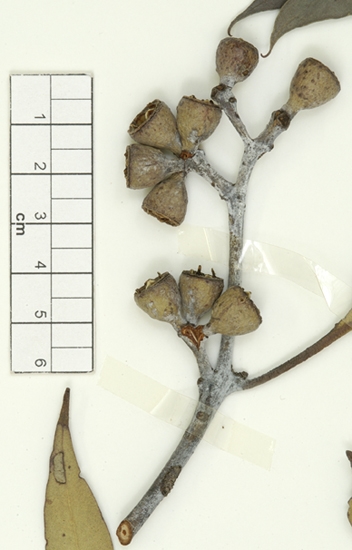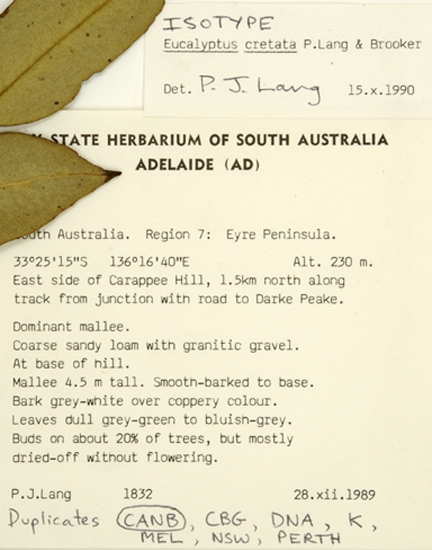Euclid - Online edition
Eucalyptus cretata
Eucalyptus | Symphyomyrtus | Dumaria | Rufispermae
T: E side of Carappee Hill, 1.5 km N along track from junction with road to Darke Peak, at base of hill, Eyre Peninsula, South Australia, 33°25'15"S, 136°16'40"E, 28 Dec.1989, P.J.Lang 1832; holo: AD; iso: AD, CANB, DNA, K, MEL, NSW, PERTH.
Bark rough, grey and coarsely flaky for lower part of stems, smooth above, pale grey to creamy yellow and pale brown; branchlets glaucous.
Branchlets with oil glands in the pith.
Juvenile growth (coppice or wild seedling to 50 cm tall): stems square in cross-section, glaucous; juvenile leaves always petiolate, alternate, ovate to broadly lanceolate, 4.5–10 cm long, 2.5–5 cm wide, base truncate, rounded or tapered, dull, glaucous.
Adult leaves alternate, petiole 1.2–2.8 cm long; blade lanceolate, 7.8–15 cm long, 1.3–3.5 cm wide, base tapering to petiole, concolorous, thick, side-veins greater than 45° to midrib, reticulation dense or obscure due to leaf thickness, intramarginal vein close to margin, oil glands intersectional.
Inflorescence axillary unbranched, peduncles 0.5–1.5 cm long, buds 7 per umbel, usually pedicellate, rarely sessile (pedicels (0)0.1–0.4 cm long). Mature buds cylindrical to obovoid (0.8–1.4 cm long, 0.4–0.8 cm wide), glaucous, scar present, operculum conical to rounded (0.4–0.7 cm long), rarely wider than hypanthium, conspicuously radially striate, stamens inflexed, anthers cuboid to wedge-shaped, versatile, sub-basifixed, dehiscing by longitudinal slits (non-confluent), style long, stigma blunt, locules (4)5, the placentae each with 4 vertical rows of ovules. Flowers white.
Fruit usually pedicellate, rarely sessile (pedicels (0)0.1–0.4 cm long), cupular to barrel-shaped or obconical, 0.6–1 cm long, 0.7–1.1 cm wide, often ribbed slightly, glaucous at first but weathering non-glaucous, disc descending, valves (4)5, at rim level.
Seeds ruby-red and lustrous, 1.5–2.8 mm long, flattened-ovoid, sometimes slightly angular, dorsal surface shallowly reticulate, hilum ventral.
Cultivated seedlings (measured at ca node 10): cotyledons reniform; stems square in cross-section, glaucous; leaves always petiolate, opposite for 4 or 5 nodes, then alternate, deltoid to ovate, 3.5–7 cm long, 3–5.5 cm wide, glaucous.
Flowering has been recorded in January, May and June.
A spreading mallee or rarely a small tree endemic to the upper Eyre Peninsula in South Australia, particularly between Lock and Darke Peak where it is found on calcareous loams on flats or on sides of granite hills, e.g. Carappee Hill. The bark is smooth, while the branchlets, leaves, buds and fruits are conspicuously glaucous.
In the classification of Brooker (2000) Eucalyptus cretata belongs in Eucalyptus subgenus Symphyomyrtus section Dumaria having these features: buds initially with two opercula the outer shed early, stamens strongly inflexed, ovules in 4 rows on the placentae and cotyledons reniform. Within section Dumaria the species belongs to a large sub-group of closely related species (series Rufispermae, 37 described species and subspecies) diagnosed by glandular pith in the branchlets, anthers cuboid to wedge-shaped, versatile, and by the reddish brown and glossy, flattish seeds which are unique to the series.
E. cretata is the only glaucous species of series Rufispermae on the Eyre Peninsula. The related E. cyanophylla of the Murray Mallee between Berri and Meringur has larger leaves, buds and fruits, the leaves being dull, bluish grey and rarely actually glaucous (waxy). The glaucous-crowned E. clelandii from the goldfields of Western Australia is a tree (mallet) with rough bark on the trunk, while the glaucous E. canescens subsp. canescens is a scruffy-barked mallee from red sand dunes in the Great Victoria Desert. Two other species in series Rufispermae, E. dumosa and E. percostata, are non-glaucous and have distributions east of the Eyre Peninsula. Five other species also in this series, viz. E. phenax subsp. phenax, E. pileata, E. conglobata subsp. conglobata, E. calcareana and E. sp. Triangolensis occur on the Eyre Peninsula but are non-glaucous.

